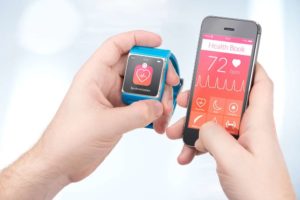[Podcast] Engage at Warp Speed With New Healthcare Technologies

Ed Bennett, founder of MarTech Health Directory
Ed Bennett has long been a thought leader in healthcare social media and marketing. The founder of MarTech.Health, a new kind of vendor directory built for healthcare marketing professionals, he’s always been on the cutting-edge of healthcare technologies, so I was excited to talk to him about the recent session he facilitated at the 2018 HCIC (Health Care Internet Conference).
The event was titled “Engage at Warp Speed with New Communications Platforms: Balancing Patient Expectations, Ethics and Provider Realities,” and the panel is made up of healthcare technology leaders plus a special physician guest.
You can watch the full session via HCIC here, or listen to our conversation by pressing play below. Read on for our overview and key takeaways.
Some Key Questions Around New Healthcare Technology
Several new technologies have emerged dramatically and quickly in the last year or so that impact patients’ day-to-day lives. This covers everything from artificial intelligence and machine learning to chatbots, voice response systems, and wearables.
And it turns out, there’s a lot of misunderstanding and uncertainty about how and whether to integrate these systems as healthcare providers.
In our interview, Bennett says that until recently, most of the changes an organization would make in marketing or digital innovation would be fundamental communication stuff—introducing a new website or better mobile app, for instance. And even these straightforward changes could create a lot of confusion within an organization.
Now, the conversation is centered around the complex data that’s collected from many of these devices and innovations. For this workshop, Bennett asks: "How does that integrate into our medical records? How can we develop personalized healthcare plans using this information? And where do we go from here?"
About the Workshop
Bennett’s workshop assembles three presenters who work at companies that have expertise in or are currently utilizing some of these technologies. James Gardner, Director of Market and Business Development at MedTouch, Mike Mangi, Director of Strategy at Phase2, and Abhi Sharma, Vice President of Product at Loyal, all take a deeper dive and explain the impact and opportunities they see for various healthcare technologies.
What’s also interesting about the panel Bennett has assembled is the 4th member: Dr. Chantal Reyna, a surgeon at the University of Cincinnati Cancer Institute. She’s there to provide an important perspective often neglected in these early discussions—the clinical perspective.
“So often in marketing and digital services inside healthcare systems,” says Bennett, “we’re coming up with ideas or being presented ideas, and we have to work with the clinicians to buy into it and get their feedback and their perspective. I thought it would be important at a workshop like this to have that person right there in the room.”
After each presenter talks about topics like customizing a healthcare plan based on rich data from wearables, there is a Q&A with Dr. Reyna to get her perspective.
Discussing New Technologies with Key Stakeholders
Discussions like these can and should take place within hospitals and other healthcare organizations. Says Bennett: “Our job with our clinical partners is to understand their views and their frame of reference and make sure what we’re pitching to them makes sense. We can certainly learn a lot from them about what is reasonable and what is not.”
For example, there was a lot of pushback initially with the integration of electronic health records. And people were quick to dismiss doctors who weren’t ready to integrate this into their processes. However, Bennett points out, “You’re not understanding that there’s nothing faster than writing a note with a pen. To a doctor, that ability was severely impacted when they had to spend time navigating a computer screen.”
It’s important to listen to doctors and learn how these new technologies can or cannot fit into their care plans. We have to be able to roll out these changes in a way that is accessible for doctors, and understand their hesitancy is often valid.
Related: Is Big Tech Taking Over Healthcare? What You Should Know
It’s just as important to educate doctors when there’s something they should know about, especially when new technologies can have unexpected implications. We’re about to see access to a ton of new health data from patients’ personal wearable devices, for example, and we must prepare providers to handle the rush of rich data they may soon receive.
Getting Buy-In for New Technology
Bennett says that the secret to getting new technology adopted is to understand where physicians come from and what really resonates with them. And in Bennett’s experience, what resonates is data. Show, for example, that integrating a new technology into the website like a chatbot will bring in more patients and a high ROI.
You can also have the doctors do their own research. Let’s say they object to something like creating an app for the Amazon Echo to use voice data to answer patient’s health questions. The easiest thing is to ask the doctor how many people in their close circle of family and friends use these technologies.
Bennett’s other tip for getting physicians and stakeholders to buy in to new technology is to show benefit to the patient. Demonstrate to the doctor how a certain technology makes it easier for patients to connect, schedule an appointment, or access information without being put on hold.
Healthcare Must Take These Opportunities Seriously
There are upsides and downsides to every new technology and tool that comes along in healthcare. The biggest downside is that many of these technologies—voice response, AI, wearables—are so new, there’s no data to compare them to. It’s hard to grasp and theorize all the possible outcomes when there’s never been anything quite like this to come along.
“On the flipside,” says Bennett, “the opportunity is so high, we’d be remiss as an industry if we didn't take it seriously and try to figure out the best way to make use of it.”
There’s already a demand for many of these products and technologies whether we like it or not. How we choose to anticipate and react to their use is up to us. Bennett’s final comment speaks to the trend of healthcare technology today:
“I was there in the early- and mid-90s when the internet was just starting to take off. There were so many exciting possibilities being explored. But things now have died down for so long, with only incremental changes and minor updates. I’m starting to feel that we’re on the cusp of a new generation with some fundamentally new and exciting ideas and technologies.”
It’s time for healthcare to engage at warp speed.
Related Articles:
9 Healthcare Marketing Podcasts You Can’t Miss
[Podcast] Healthcare Marketing and the Patient Experience
Doctor-Patient Relationship Building: 4 Technologies to Focus On
Look Who’s Talking: Physician Marketing Finds New Voice for Patient Communications








